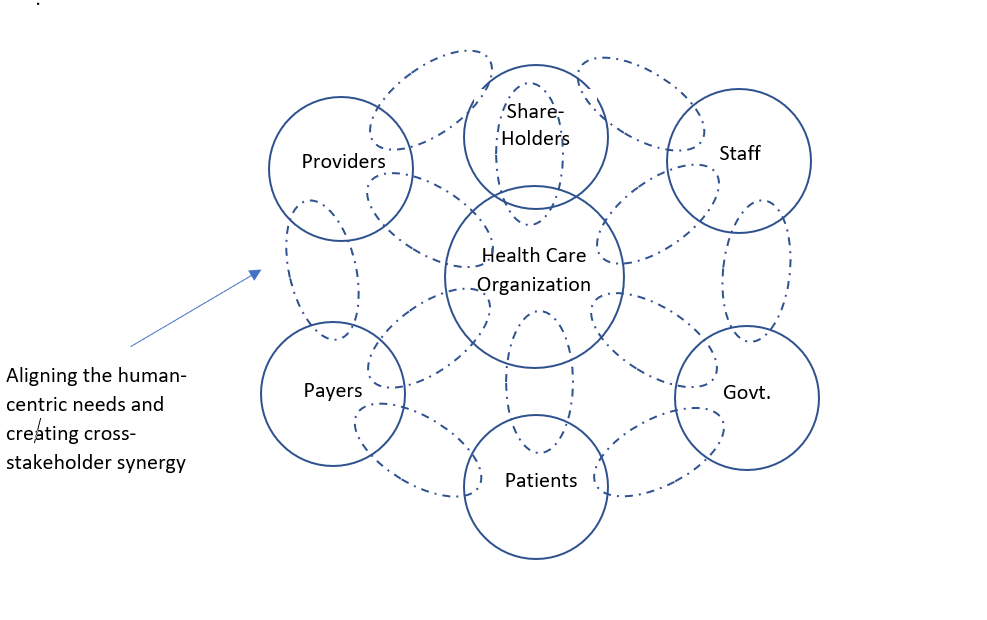Disrupting the Healthcare Industry With Design Thinking
The Stonehill strategic communications team sat down with Teddi Barber to discuss the disruption in healthcare and how leveraging Design Thinking can establish a sustainable and thought-provoking dialog on its impacts on mature industries.
Stonehill: Teddi, can you expand on the misconception that mature industries are exempt from experiencing continued growth?
Teddi: Mature industries are historically characterized by plateaued growth in revenue, low price per earnings (P/E) ratios and operate in a niche where barriers to entry and continued growth have created an environment marked by “only the strong surviving”. Many investors and strategists often dismiss players in mature industries of presenting opportunities for a resurgence of hyper-growth. However, when evaluating growth potential, it rarely in fact has anything to do with the industry phase but all to do with consumer demand and either creating a stimulus or reacting to a stimulus. It is in fact quite simple.
Growth in a mature industry is also predicated on the ability and agility to diversify when and where appropriate; and that, is where Design Thinking comes in: (1) When (i.e. strategic timing) should the industry player implement a diversification strategy and (2) Where (i.e. along the value chain) should the event(s) occur?
Stonehill: How does injecting the framework of Design Thinking present a unique strategy in mature industries?
Teddi: Design Thinking is a human-centric approach to creating sustainable advancements towards the aligned objectives of the organization’s stakeholders. It focuses on drawing upon empathetic values to derive business focused results.
In mature industries, one must drive the intended strategy from a human-centric perspective to achieve success; and I make this assertion for the following reasons: in mature industries, the organization is participating in a proven industry that has demonstrated profitability, a consistently demanded product or service exists and a culture and/or established means of doing business is collectively shared by its human capital. Thus, to create an effective strategy to deliver the intended results, it must appeal to and empathize with the organization’s stakeholders (employees, board of directors, shareholders, customers, etc.) and create a stimulus which meets each of their respective needs. Otherwise, the developed strategy will simply sit on a bookshelf amidst the stack of other “hopeful” ideas.
When the strategy exudes the human element, is supported by sound data and analysis, and demonstrates a prowess for success through stringent testing, you have just created a unique formula for the intended opportunity.
At the present time, the healthcare industry is embarking on one of the largest shifts we have witnessed over the course of the past few decades. New entrants are participating in the market; consumers are demanding price transparency and increased access to care; providers are working under tightened constraints with an acute focus on value-based care; and, consumerism is quickly reducing the perceived need for traditional brick-and-mortar points of access. Surprising to most, participants in this industry have equally available opportunities for renewed growth as well failure – the critical key, is which market player can develop the strategy to capitalize on the potential for growth.
Stonehill: How has the Design Thinking methodology proven successful in creating high-impact strategies; especially in this industry type?
Teddi: Design Thinking mirrors exactly what, as strategists, we target for our clients -- agility. Design Thinking is a non-linear framework that supports businesses in real-time versus traditional static methodologies.
In keeping with the health care example, organizations are being forced to quickly adapt to rapid changes in demands for health care from all vantage points. Design Thinking thrives in this environment as it does the following:
The power behind Design Thinking, especially in mature industries, is the ability to transcend perceived barriers to growth by unlocking opportunities through effectively capitalizing on the ideations of human-centric drivers.
This basic concept is how leaders in the health care space have realized significant growth opportunities in the development of telehealth (not to be confused with telemedicine). Telehealth is a broad consumer-facing technology that not only delivers a pathway for care but also education.
Through Design Thinking, it was discovered that Telehealth meets the needs of the organization by reducing the potential loss of patients and ensuring the continuum of care; the providers are able to ensure effectiveness of care plans and conduct more frequent follow-up care visits, especially when the patient may not live close to the provider’s office; patients are experiencing minimized time away from work and school and can schedule care when convenient to their schedules, and the adjacencies continue across the stakeholder spectrum.
Telehealth is a perfect example of how a mature industry, through Design Thinking, created a solution that meets the human-centric needs and requirements of each of its stakeholders and is now, arguably, one of the most rapidly growing segments in the healthcare industry.


